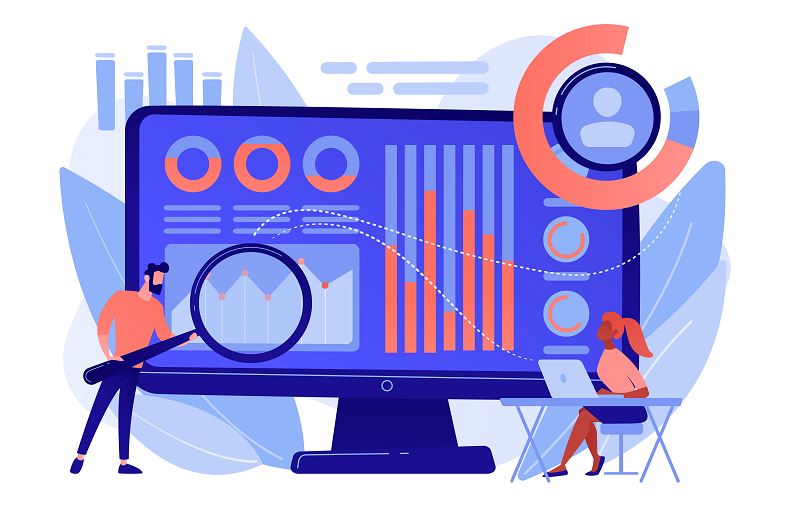Vigilance in the Digital Age: A Comprehensive Guide to Website Monitoring
In the age of digital business, your website is your gateway to the world. However, as the digital landscape evolves, so do the complexities and challenges associated with managing a website. Website monitoring is a vital tool to ensure your site’s optimal performance and uptime. This comprehensive guide uncovers the fundamentals of website monitoring and its role in driving digital success.
Understanding Website Monitoring
Website monitoring is a meticulous process designed to test and verify that end-users can interact seamlessly with a website or web application as anticipated. In this era of digital business, the performance of your online presence directly impacts your brand image and customer satisfaction. Therefore, to maintain an excellent user experience, it becomes crucial to monitor your website routinely.
Website monitoring essentially involves three key components:
functionality, availability, and performance.
Functionality refers to the various interactive elements on your website, such as forms, login portals, eCommerce shopping carts, and more. If any of these functionalities fail, it can lead to a poor user experience or, worse, a loss of potential sales. Hence, functionality monitoring involves regular testing of these interactive elements to ensure they are working as intended, allowing your users to interact without any hassle.
Availability or uptime monitoring is a critical aspect of website monitoring. In simple terms, this ensures that your website is up and running and accessible to users at all times. Any instance of website downtime can lead to loss of customer trust, missed business opportunities, and a drop in search engine rankings. Website monitoring tools regularly ping your website from various locations around the world to ensure it is accessible. In case of downtime, these tools will send immediate alerts so you can address the issue promptly.
Lastly, performance monitoring focuses on how quickly your website or web application responds to user interactions. As website speed directly affects user experience and search engine rankings, it’s vital to monitor and optimize load times. Performance monitoring involves tracking the load speed of various website elements, identifying bottlenecks, and taking necessary action to improve site speed.
By implementing effective website monitoring, you essentially enable proactive problem resolution. The moment an issue is detected, you receive real-time alerts, allowing you to address and rectify the problem before it escalates and affects your end-users. In this way, website monitoring forms the first line of defense in ensuring a high-quality, consistent user experience.
The Imperatives of Website Monitoring
Website monitoring is crucial for several reasons:
- Uptime Assurance: It helps ensure your website is accessible to users at all times, preventing loss of sales and user trust due to website downtime.
- Performance Monitoring: It helps track your site’s speed and responsiveness, vital factors in user experience and SEO rankings.
- Problem Detection: It assists in identifying issues that could harm your website’s functionality, enabling quick resolution.
- User Experience: Regular monitoring helps provide a seamless experience for your visitors, crucial in customer satisfaction and retention.
Website Monitoring: A Step-By-Step Approach
Successful website monitoring involves a few key steps:
- Set Performance Benchmarks: Determine your website’s desired performance levels in terms of speed, functionality, and uptime.
- Select a Monitoring Tool: Choose a website monitoring tool that best fits your needs. Features to look for include real-time monitoring, alerting capabilities, and detailed reporting.
- Monitor Regularly: Regularly check your website’s performance metrics and functionality.
- Analyze and Optimize: Use the data gathered to identify areas of improvement and optimize your website accordingly.
Emerging Trends in Website Monitoring
- AI in Monitoring: AI can predict potential issues before they occur, enabling proactive measures.
- Real User Monitoring (RUM): RUM provides insight into actual user experience, helping improve website design and functionality.
- Mobile Monitoring: With the growth in mobile users, monitoring the mobile version of your site is crucial.
Conclusion:
Website monitoring is an essential part of maintaining a successful online presence. It ensures your website’s availability and optimal performance, thereby safeguarding user experience and your online reputation. Embrace website monitoring as a part of your digital strategy and fortify your website against potential pitfalls.
FAQ – Frequently Asked Questions about Website Monitoring
What is website monitoring?
Website monitoring is the process of continuously checking a website for issues related to its functionality, availability, and performance, allowing for proactive issue resolution.
Why is website monitoring important?
Website monitoring is crucial for ensuring website uptime, tracking site performance, detecting potential problems, and ensuring a seamless user experience.
What are the key steps in effective website monitoring?
Key steps include setting performance benchmarks, choosing a suitable monitoring tool, monitoring regularly, and analyzing and optimizing based on the data gathered.
What trends are emerging in website monitoring?
Emerging trends include the use of AI for predictive monitoring, Real User Monitoring (RUM) for user experience insights, and mobile monitoring due to the rise in mobile browsing.
How does website monitoring contribute to a better user experience?
Regular monitoring helps ensure website availability, optimal speed, and proper functionality, all of which contribute to a seamless and satisfying user experience.
Why is mobile monitoring becoming more important?
With the significant growth in mobile users, it’s essential to monitor the mobile version of your site to ensure its optimal performance and usability.
In today’s digital landscape, website monitoring is a pivotal aspect of maintaining a robust online presence. It helps ensure website uptime, a critical factor in user trust and SEO performance. Moreover, through regular performance monitoring, businesses can optimize their websites for speed and responsiveness, enhancing the overall user experience. Key trends, such as AI in monitoring and Real User Monitoring (RUM), are shaping the future of this field, making website monitoring an indispensable part of digital strategies. By adopting effective website monitoring practices, businesses can stay ahead of potential issues, improving their website’s reliability and user satisfaction.






